Trip Report: Haiti
Visited in November 2020
When you travel from the Dominican Republic to Haiti, you first experience a tremendous culture shock. It is like entering a totally different world, although you’re still on the same island.
Port-au-Prince, the capital of Haiti, no longer looks like the Caribbean, but rather like West Africa. That means a lot of garbage everywhere, poor infrastructure and street markets at the roadside. Moreover, you see people pumping water from wells or washing laundry by hand, many stray animals, terrible traffic and everything is quite a chaos.
The sad truth is that Haiti is by far the poorest country in the western hemisphere and one of the poorest countries in the world. Already from the airplane I saw a large number of shack houses lined up close to each other. But the poverty becomes even clearer when you drive through the capital.
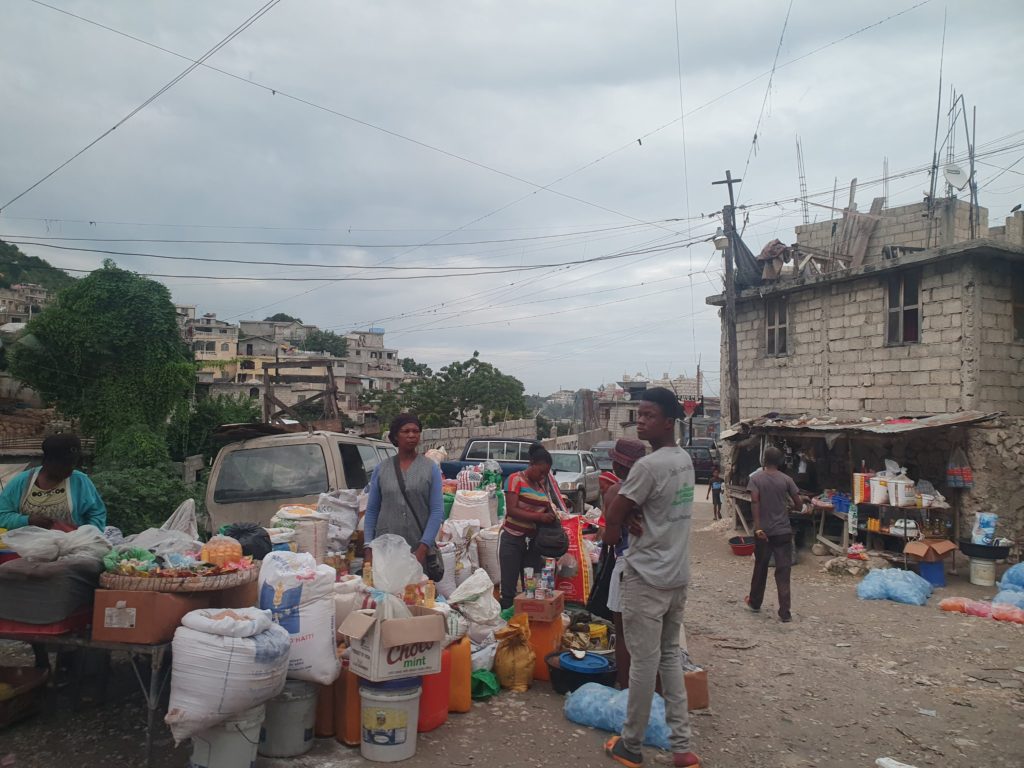
Haiti can also be considered as a rather dangerous country and most governments advise against traveling here. The crime rate is high and there are also frequent kidnappings. In fact, the Dominicans, to whom I had told about my trip to Haiti in the past days, were all shocked. A trip to Haiti sounded to them as if I was going to enter a war zone. Of course this is exaggerated, but due to the safety situation I preferred to hire a local guide and a private driver instead of traveling alone.
When we started our tour in Port-au-Prince, I didn’t know yet that my two days with that guide were going to be quite awkward. Perhaps, I should have already become suspicious in the beginning, because when I left the airport I could not see him waiting for me. He finally showed up with a delay of half an hour. Not a big deal, but as I said, maybe I should have already had a premonition at that time.
An intense city called Port-au-Prince
The program for the first day my guide had arranged for me included about 7 or 8 sights in the capital. Port-au-Prince is a big city, almost 1.3 million people live there and the distances are long. Therefore, we spent a good part of the day in the car. However, it didn’t take long until we switched to walking.
Our first stop was a neighborhood with many so-called gingerbread houses. I read about these houses online and was very excited to see them. Apparently, my guide had arranged a meeting with a man, who was supposed to show us one house from the inside. Unfortunately, the man did not show up, so I could only take a few photos from the outside. Better than nothing I thought.
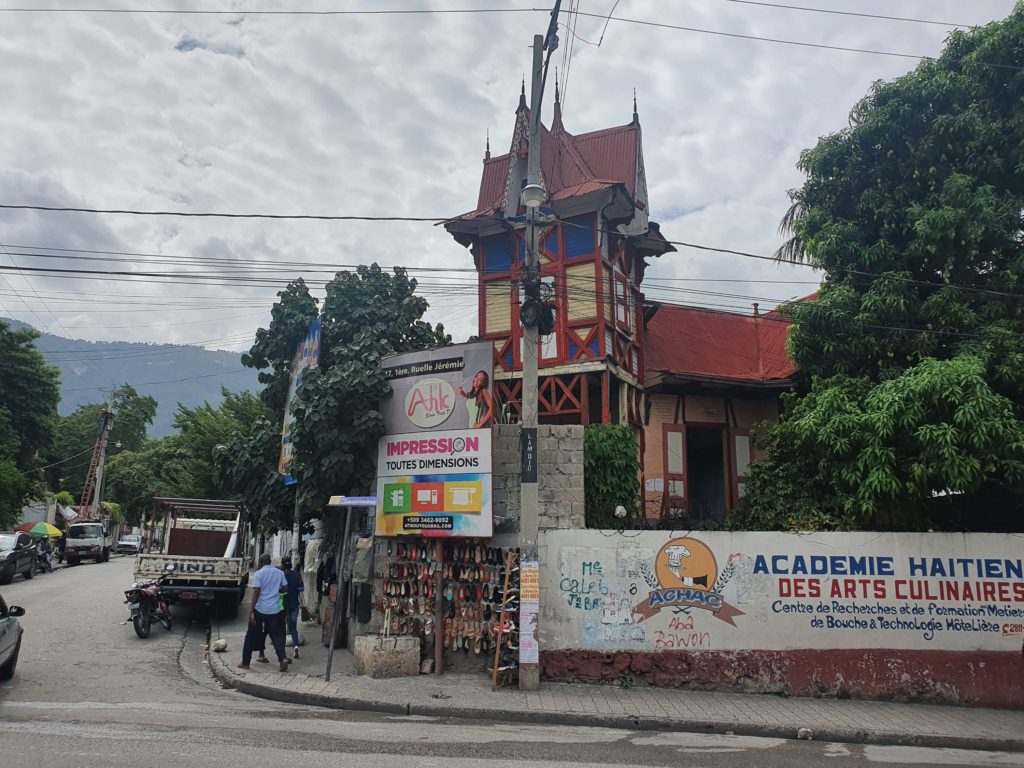
In general, when I took photos in Port-au-Prince, I did it in a discreet way, as I soon realized that Haitians hate being photographed. When I was trying to take a picture of a tap-tap, the Haitian public transport, a man on a motorcycle who just drove in front of my lens yelled at me. My guide later explained to me that I should avoid taking pictures of people, thus I was more careful afterwards.
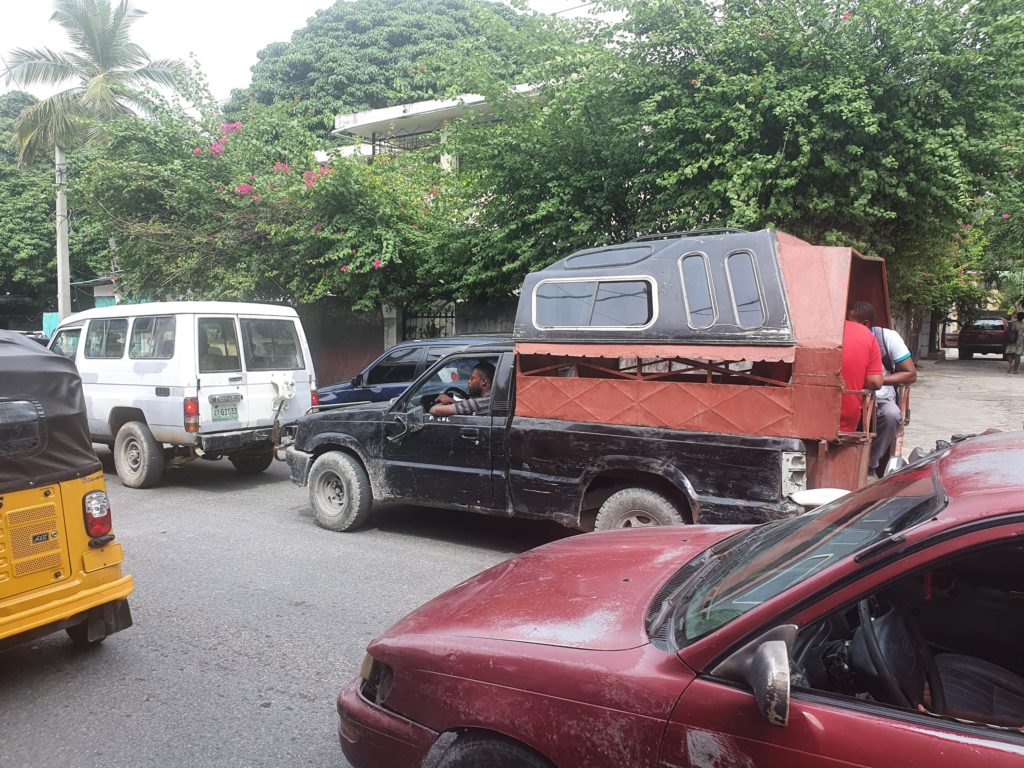
I found the vibe here in Port-au-Prince quite tense. Not that I felt uncomfortable, but I did not feel very welcome here either. As we walked down the street, I noticed a man on the other street yelling at me. I have no clue what he said in Creole, but it didn’t sound like “hey, you wanna take a look at my store?” but more like “you’re not welcome here, fuck off!”
Maybe this situation was just bad luck, who knows. I met another traveler from the Ukraine in the Dominican Republic, who went to Haiti a week after me and had no negative encounters with locals. Unlike me, he did not even travel with a guide.
Another reason for the tense feeling could have been the protests that took place in Port-au-Prince that day, because suddenly we saw the police blocking the street in front of us and my guide said we should turn back. Just before I turned around, I saw a policeman kicking a man lying on the ground. I was in Haiti for only about two hours and already witnessed two men yelling at me plus a policeman kicking a man. Quite an eventful trip, I thought.
I also noticed the huge amount of motorcycles in this city. “They sometimes cause problems here,” my guide said. “You mean because of accidents?” I asked. “No, because of drive-bys! This makes it easier to rob the victims,” my guide explained. I raised my eyebrow. “Where do these drive-bys happen? Only in certain neighborhoods?” – “No, it can happen anywhere in Port-au-Prince, to be honest. But don’t worry, it doesn’t happen often.”
Post-Apocalypse
In 2010, Port-au-Prince was hit by the worst earthquake that ever happened in the Americas. The then Prime Minister announced that 316,000 people lost their lives. This figure is an estimate, but it is significantly higher than the estimated number of fatalities (230,000) caused by the 2004 tsunami in Southeast Asia. Thus, the earthquake in Haiti is the worst natural disaster of the 21st century.
When we arrived in downtown Port-au-Prince, it looked as if the earthquake had only happened a few months ago. The place where the presidential palace collapsed is now just an empty square. Even the cathedral, a beautiful building back then, is only a ruin today.
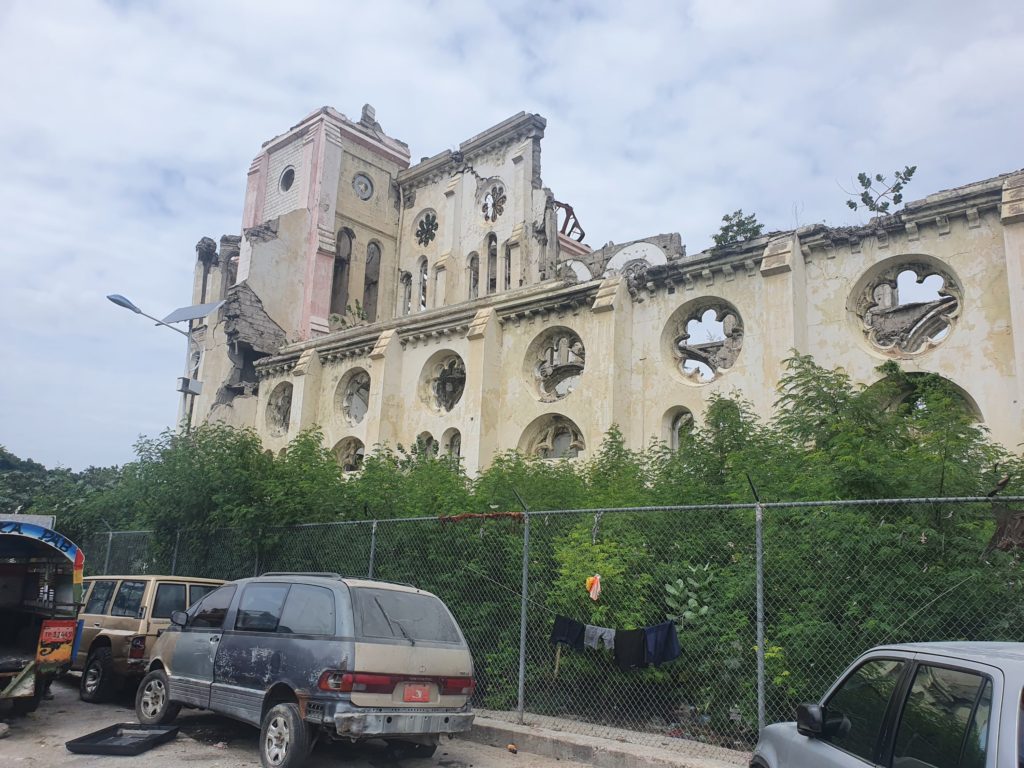
Downtown Port-au-Prince felt like being in a post-apocalyptic horror movie. Seriously, I have seen much misery in the world, especially in some of the 24 African countries I have visited so far. But downtown Port-au-Prince was by far worse than that. I don’t even mean the pure destruction that was still visible, but also the dirt and garbage in this part of the city.
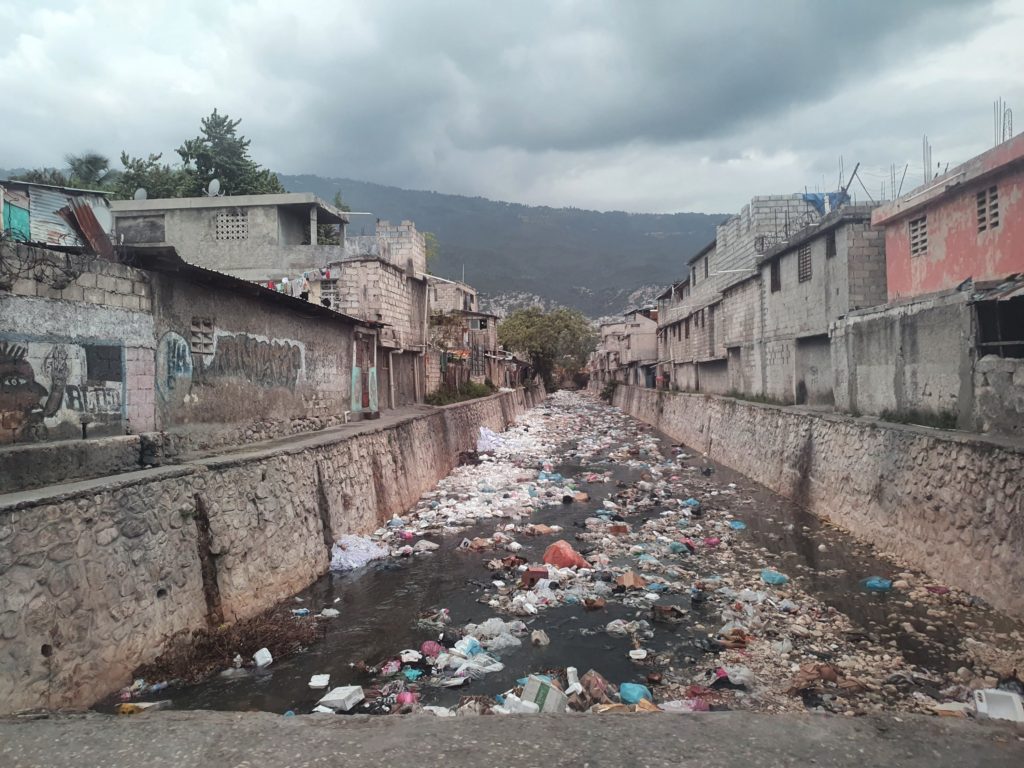
As harsh as it may sound, that part of Port-au-Prince looks like a garbage dump with houses built around it and I also saw many people living in improvised tents. To be honest, I found this part of the city extremely depressing. Even the slum Jalouzy, where my guide lives and where we drove through the next day, didn’t look as bad as the city center.
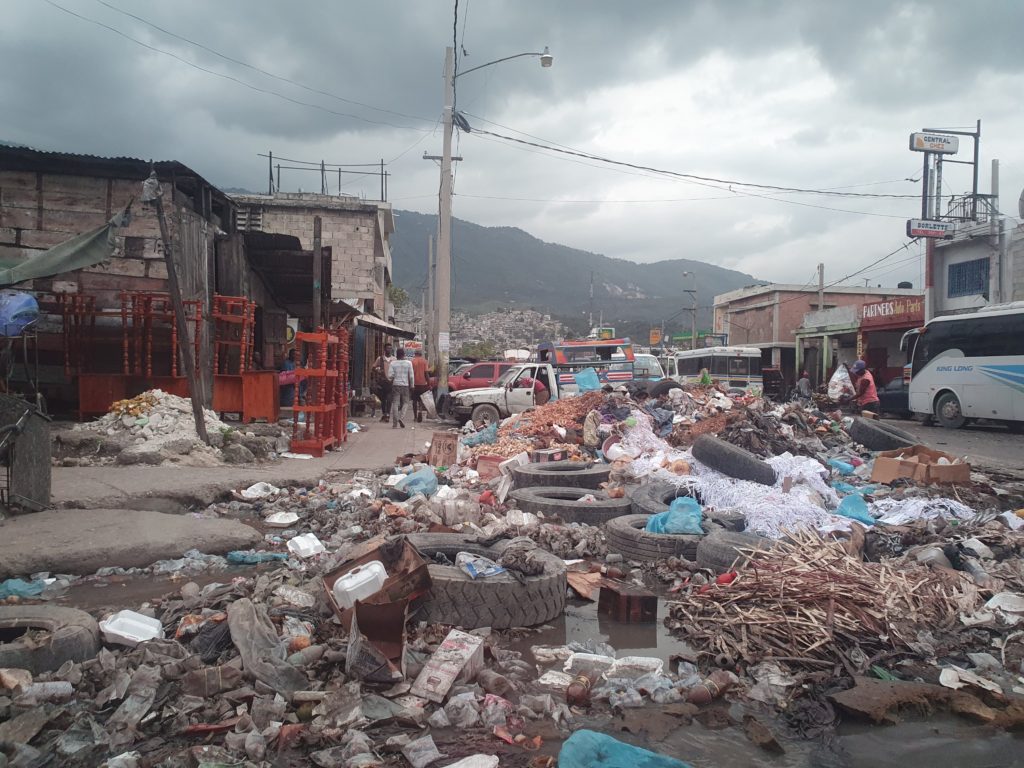
Sometimes gigantic puddles littered with garbage lay in the middle of the street. In one of these garbage pools I even saw a pig wallowing in the black water next to mountains of plastic. In addition, I noticed people peeing at the side of the road from time to time, which didn’t seem to bother anybody. It seemed to be quite normal.
In downtown Port-au-Prince, too, I interpreted the looks of the locals at best as amazement and at worst as hostility. Interestingly, there are two explanations why Haitians don’t respond very well to “gringos”. One of them is completely bizarre, while the other one is more or less comprehensible.
The understandable reason first: Haiti was a French colony for almost two hundred years until 1804. When the Haitians proclaimed their independence, France demanded reparation payments. In return, they promised to recognize the independence of Haiti. Haiti, which was actually not so badly off economically, committed itself to pay the French a modern equivalent of 21 billion dollar. It took until 1947 for Haiti to pay off its debts, so almost 150 years. These reparation payments were one of the main drivers of the country’s current poverty.
Another, much crazier reason why white people do not seem to be very welcome in Haiti is because many Haitians believe that the 2010 earthquake was not a natural disaster. Instead, they believe that underwater missile tests of the United States caused the earthquake. I read about this theory online, but I didn’t think it was a popular opinion. My guide, however, confirmed that this theory is widespread in Haitian society.
Human ATM
In downtown Port-au-Prince, my guide took me to the iron market, a market that seems to sell mostly voodoo stuff. Voodoo is a religion that is mainly practiced in Togo, Benin, Ghana and Haiti. It has actually not much to do with black magic, devil worship and cursing people as we know it from Hollywood movies.
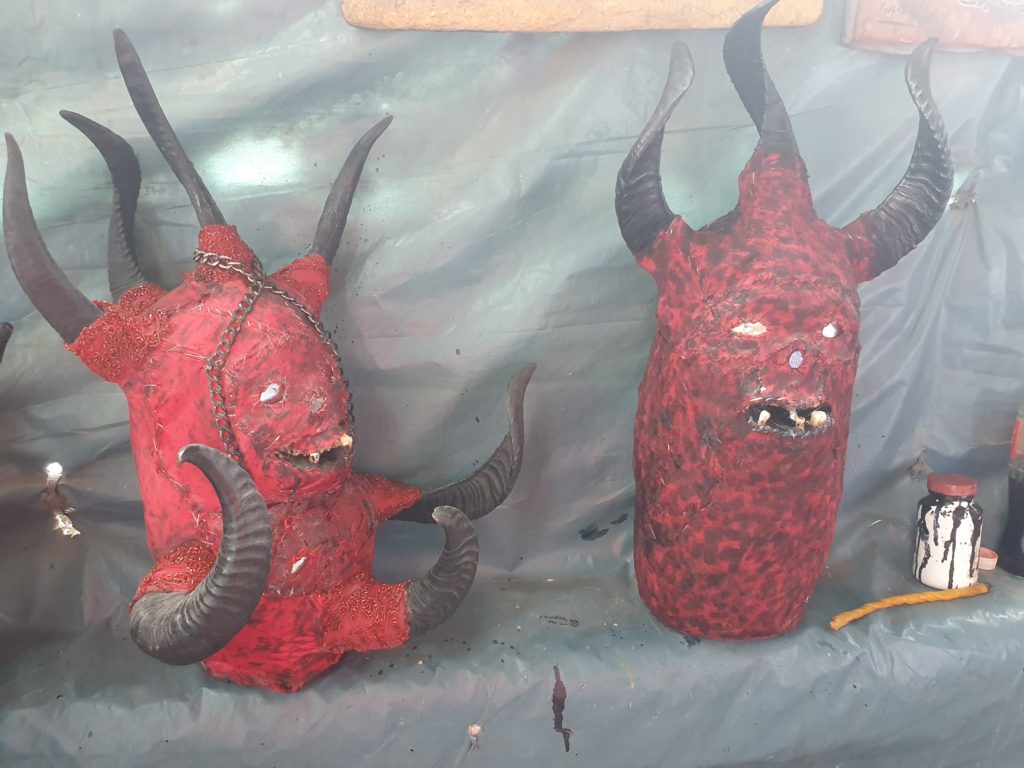
I was introduced to a gentleman who led me from stand to stand and explained to me what the people where selling or more precisely what I could buy. Since I had neither (local) currency nor interest, I thankfully declined, even though I had the feeling that I was expected to buy something. The market was still interesting and one of the better sights in Port-au-Prince.
By the way, when I posted some photos on Facebook after my trip, a fellow world traveler commented that she witnessed a gun battle between the police and a gang in front of this market. One of the SWAT team members was even cheeky enough to use the car she was sitting in with her three children as his cover while he was shooting at the gang members. Another anecdote from Haiti, one might say.
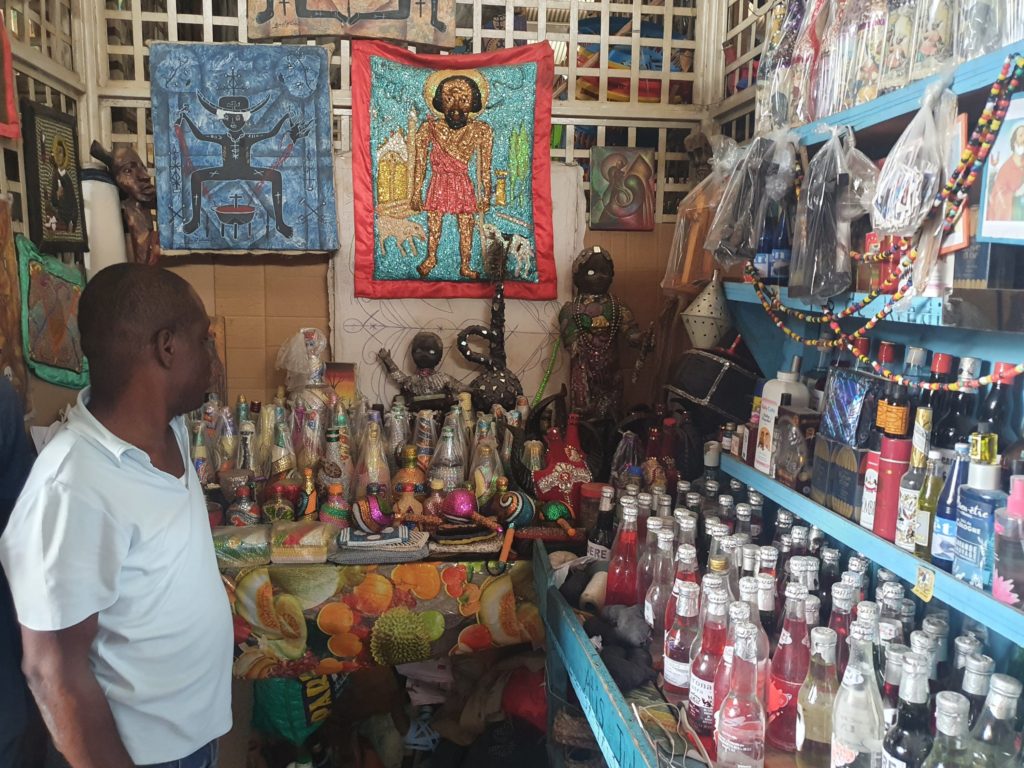
Not far from the iron market was another museum where a gentleman creates bizarre sculptures from recycled materials. My guide told me before entering that I had to pay if I wanted to take pictures inside the museum. As a result, I decided not to do so. Nevertheless, the owner of the museum seemed to be a bit upset in the end because I didn’t want to give him money.
Later we drove to Fort Jacques, a ruin with a nice view over Port-au-Prince (at least when the weather is nice). As soon as we got out of the car, two “locals guides” were standing next to us. I told my guide to politely tell them that we didn’t need them. As I already wrote in the introduction, nothing is free in life and I did not feel it necessary to have an extra tour guide here.
My guide just said that this is how it works in Haiti. Therefore, I told the young men that unfortunately I could not give them any money and that I did not need their services. I still didn’t have any local currency (although I told my guide several times that we should go to an ATM) and I didn’t want to give them the $50 bill in my wallet.
Although the two men initially refused to accept that I visit the fort without payment, they finally agreed to show me the place. Nevertheless, I would have preferred them not to come at all, because in the end I still got a disappointed look from them. Somehow I felt a bit like on a tour in an Arabic country, where you first visit the carpet store, then the diamond store and finally the souvenir store.
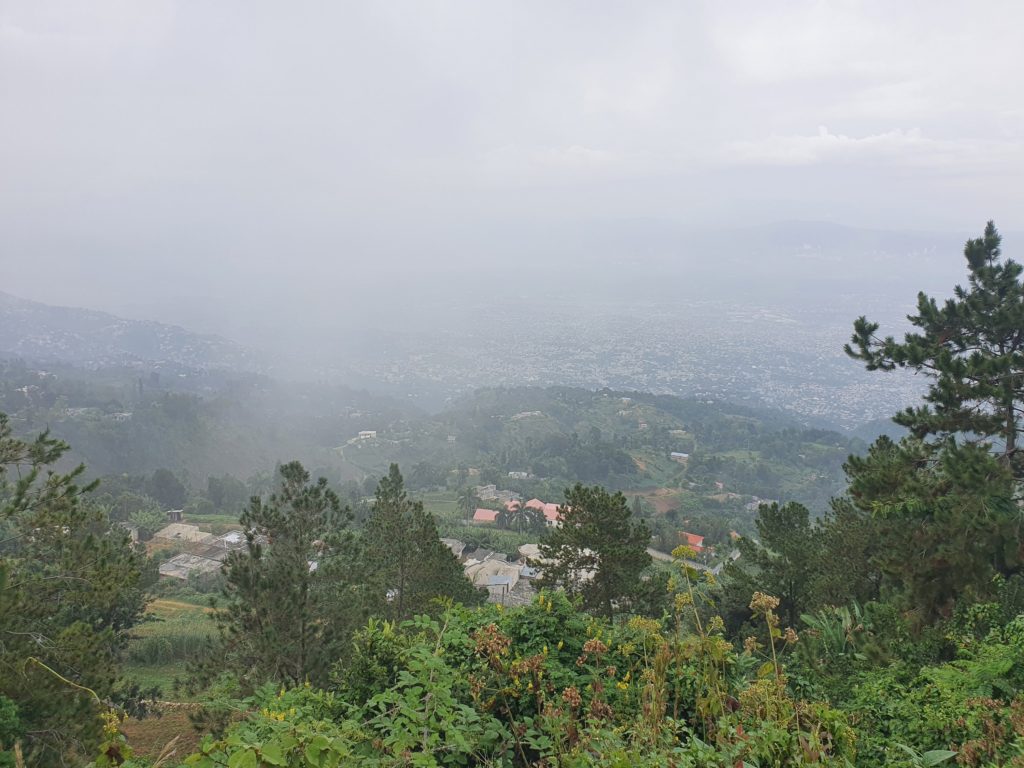
More and more I came to the conclusion that my guide was a nice guy, but not exactly a super guide. He was recommended to me and some like-minded travelers, who also want to visit every country in the world, had booked him too and were satisfied with him. I could not really say that. Besides the already mentioned delay at the airport and the poor organization to have someone to show us the inside of the Gingerbread house, there were other points to criticize.
I found that he did not know very much about his country. He answered many of my questions about Haiti with “I don’t know” and some of his statements, for example that 15 million people live in Port-au-Prince alone, were simply wrong. It also bothered me that I had to say certain things, for example that I wanted to buy water somewhere, about seven or eight times until it finally worked out after three hours.
Someone who wrote about his trip to Haiti on TripAdvisor and had the same guide was quite accurate when he described his time with him like walking through the streets with a kid and chatting a bit. He was not a real guide. It was more like meeting someone from couchsurfing, who was showing me around. But to be honest, that would have been okay considering the cheap price he demanded for his service. I paid him $40 per day and $110 per day for the driver.
As I said, all the points I criticized were no big deals. However, a quite unpleasant situation was yet to come…
Lunch for three
I told my guide around noon that I would appreciate it if we could take a short lunch break. He said that I could do that at the observatory, the next place we were going to visit. So far so good.
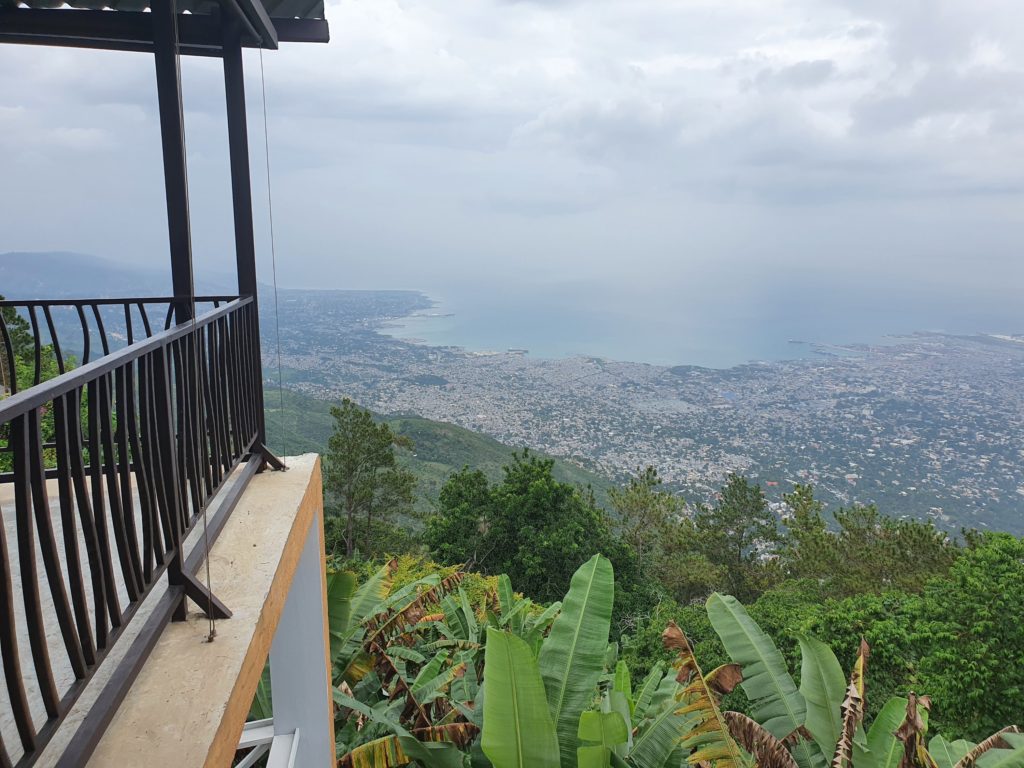
When we arrived at the observatory after 2 pm, I ordered an appetizer and a drink for about $15, while my guide and the driver ordered a big plate of food for themselves.
Finally, the bill was 90 dollars and it seemed that they expected me to cover everything. If I have a guide, especially in poorer countries, I often invite them. It’s not that I feel that this is a must, but in other countries my guides always took me to restaurants where you don’t pay more than $10 per person. Sometimes the guides also take me to a restaurant and say that they will come back in an hour because they will eat somewhere else.
“We should pay now and then move on,” my guide said. Obviously, he meant we would continue as soon as I had paid. Since I still had no money on me, I told him that they should pay and I will give them my share (!) later. Conversations in Creole followed, accompanied by nervous laughter and angry shouts from both of them. They probably realized that their plan to invite themselves would not work out.
Don’t get me wrong, a struggle was taking place inside me at that moment. The two had ordered food for a quarter of their salary, which they received for the two days. On the one hand, I felt sorry for them and thought about whether I should simply pay for it. On the other hand I found this kind of brazen. To add $90 for lunch to the $300 I had already paid them was going too far. Especially, since I did not feel that my guide was doing an excellent job so far.
Besides, I definitely did not want to invite the driver, who was my guide’s brother-in-law. I found that guy to be an extremely unpleasant fellow, who often looked at me in an unfriendly way as if I was ruining his day off. And even if I had paid, what would have happened then? Would they have expected that all their expenses would be covered by me in the next 1.5 days?
Obviously, they still had a small spark of hope, because they did not yet know how much money I would give them. I only said that I would give them my share without mentioning the exact amount. Funnily enough, finding an ATM suddenly had top priority, although I said several times during the day that I would like to withdraw money. Back then, however, it didn’t seem that important to them.
After withdrawing money, I gave them 2,000 gourdes, about 30 dollars, although my share was only $15. But as I said before, I also felt a bit sorry for the guys and rounded up. That was not the amount the driver expected. My guide translated that his brother-in-law had told him he didn’t know that he had to eat at his own expense and that he wanted his money back. He, the guide, would pay his share himself.
The stupid thing was that I had already paid the whole tour. In the worst case, I thought, the two of them would simply not show up the next day if the farewell here was not quite orderly. For this reason I gave them another 1,000. So, now I was paying half of the bill. There goes their tip, I thought.
The driver was still not satisfied with that. He continued bitching around and had my guide translate that he had tipped the waiter and would like to get that back as well. With that sentence he crossed the red line. “Come on, I gave you guys $300 this morning!” I answered quite upset. The guide then said that it was okay and we said goodbye for the day.
Already this situation was probably the most unpleasant experience I ever had with a guide, but it only got worse the next day…
Day-trip to South Haiti
The following day we took a trip to South Haiti. Besides Port-au-Prince, I really wanted to see something else of Haiti. I chose Jacmel and the Bassin Bleu, both about 2.5-3 hours away from Port-au-Prince, as the places to visit.
My guide told me the day before that we had to leave very early to avoid the traffic jam. He first suggested 5 o’clock, but in the end we agreed at 6 o’clock. When I asked what time we would be back in Port-au-Prince if we left at 6am, he said 4pm.
It sounded fine to me. Since I had a longer conversation with the owners of my hotel in the evening, I asked my guide during the course of the evening if we could start at 6:30, which was okay for him. We would save that half hour somehow in order to be back on time, I thought.
I was ready in front of my hotel at 6:25 but unfortunately my guide was not there. Somehow I had a bad feeling. Is he really not coming now, as I had feared? I texted him and got an answer 20 minutes later. They were cleaning the car and would be right there. It was 7:25 when they finally showed up. So they again had a delay of one hour.
Due to the traffic jam it took more than an hour until we finally left Port-au-Prince, but then the beauty of Haiti came out. The route from Port-au-Prince to Jacmel leads through the National Park La Visite, whose nature is breathtakingly beautiful.
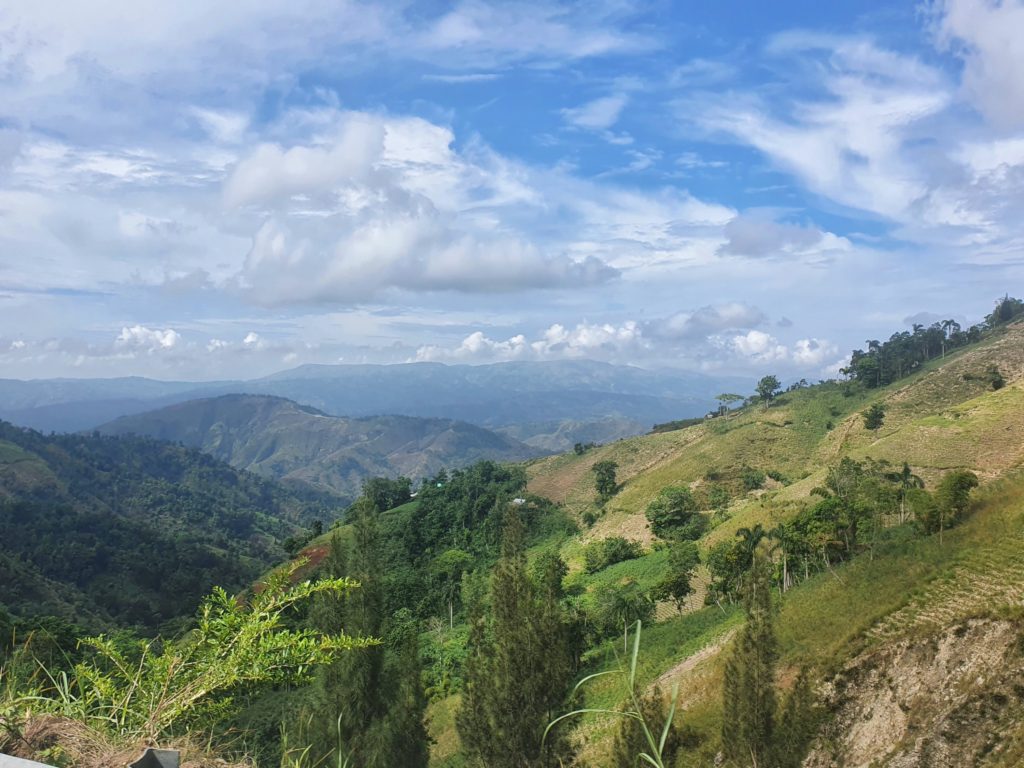
Haitians may be poor, but they are lucky enough to call the country where they live a treasure. The nature of Haiti is gorgeous, although you might not believe it if you have only seen Port-au-Prince. The truth is that this country has dream beaches, mountains, waterfalls and many other natural gems that other countries should be envious of.
However, hardly anyone would be envious of the cars in Haiti. Most of the cars I have seen during my stay were in a desolate state. Often the side mirrors were missing, but sometimes the cars looked as if they had already survived one or two crashes. According to the noise of our clutch, our car was probably also rather at the end of its life cycle.
So it was not surprising that about in the middle of route our car broke down and it took about half an hour until the guys got it running again. Why am I telling you this? That still plays a role in the further course of the story.
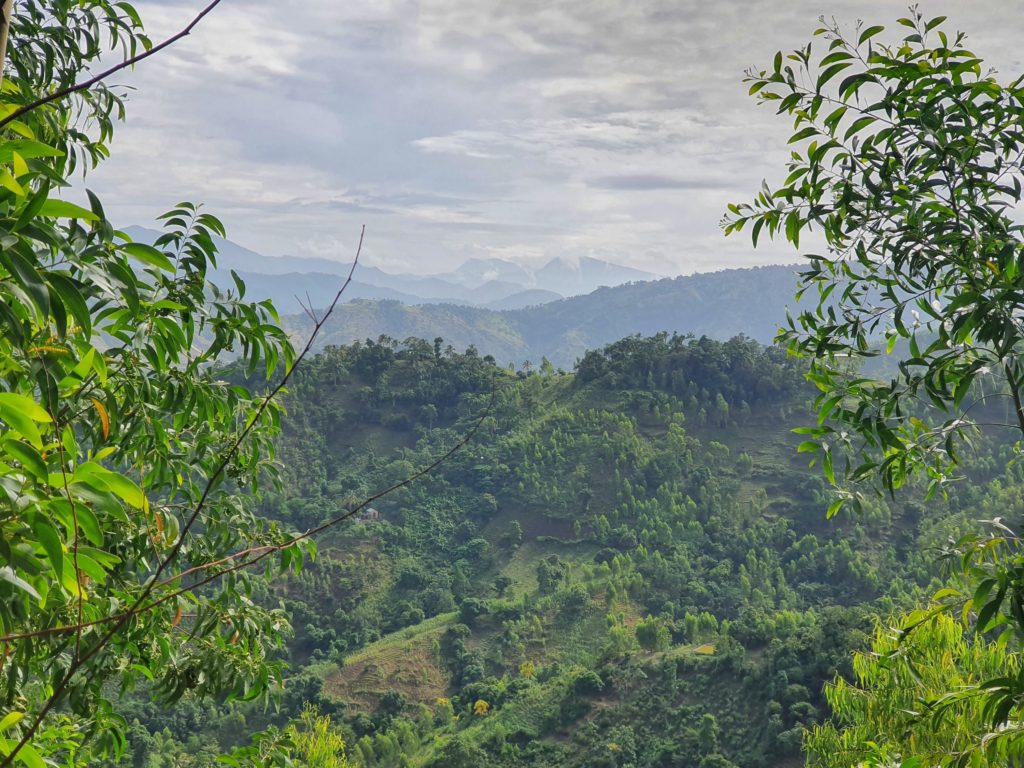
Bassin Bleu
Our first stop was at Bassin Bleu, a natural water site located a few kilometers from Jacmel. As soon as we got out of the car, we had some “local guides” beside us like on the day before. This time I had to buy a ticket for the Bassin Bleu, so I thought it would include the “service” of the young men who would accompany us.
We reached Bassin Bleu after about ten minutes and I have to admit that this sight is nothing special. Due to its proximity to Jacmel, most people visit it when they are in the south. The scenery is nice but driving almost 3 hours from Port-au-Prince only to see Bassin Bleu is in my opinion not worth it.
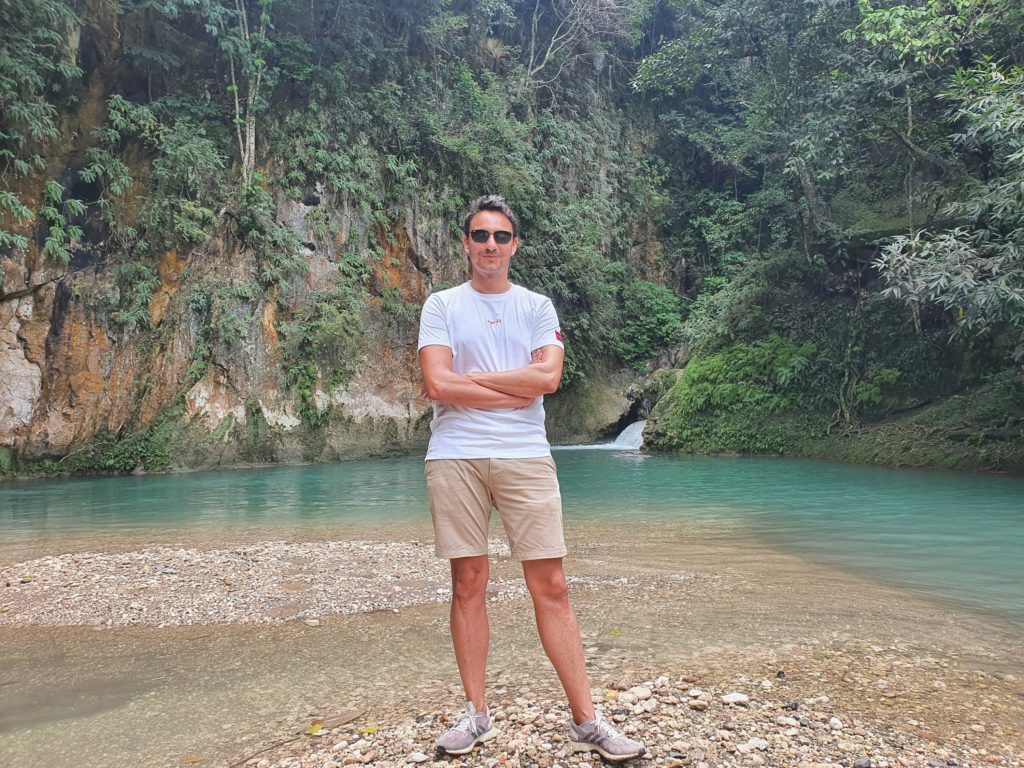
After about twenty minutes we were back at the car and once again it was all about money. “You should give the boys something for showing us around.” – “I have already paid an entrance fee of 400 gourde ($6)!” I answered. “Yes, but this is not for the boys.” I pulled a 100 bill, about $1.50, out of my pocket. “That is not enough,” my guide said.
I asked my guide how much the boys would expect, but he didn’t answer. Instead, he disappeared to look for his brother-in-law, who was not in the car anymore. It happened quite often by the way that we returned from a sight and the guy was not there anymore. While my guide disappeared to search his brother-in-law, I was left surrounded by about eight young Haitians waiting for their salary.
“You know that Haiti is very poor and the people who visit the waterfall always give us money. Sometimes $50, and recently a Canadian gave us $100,” one of the boys told me. “I will definitely not give you $50,” I replied. I was so sick of being looked at like a walking ATM in Haiti. Especially since I was traveling with a guide, from whom I would expect to prevent such situations.
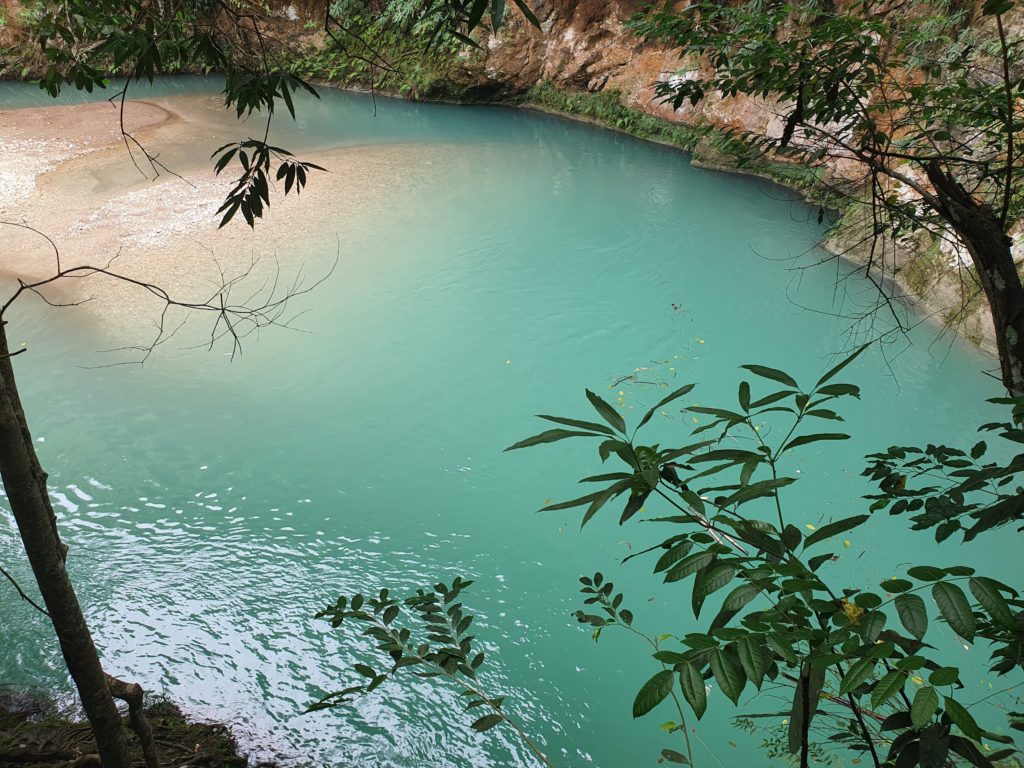
After about a quarter of an hour my guide came back, while the Haitians were still looking at me expectantly. I said to my guide: “Listen, I’ll add 600 gourde, then I paid a total of 1,000. That has to be enough.” 1,000 gourde, or $15, seemed to be a rip-off for a 20-minute walk. However, the locals found this to be an absolute impudence, as they reluctantly took the money.
Jacmel
When we arrived in Jacmel 15 minutes later, my guide introduced me to the guide for Jacmel, a guy he had picked up at Bassin Bleu shortly before.
I just thought: “Dude, I hired YOU as my guide, why do we need another guide everywhere?! What is your job? What do I pay you for?” I was pissed off but told him calmly that we didn’t really need a guide. If the young man still wants to play guide, he is welcome to do so, but I will not pay him anything.
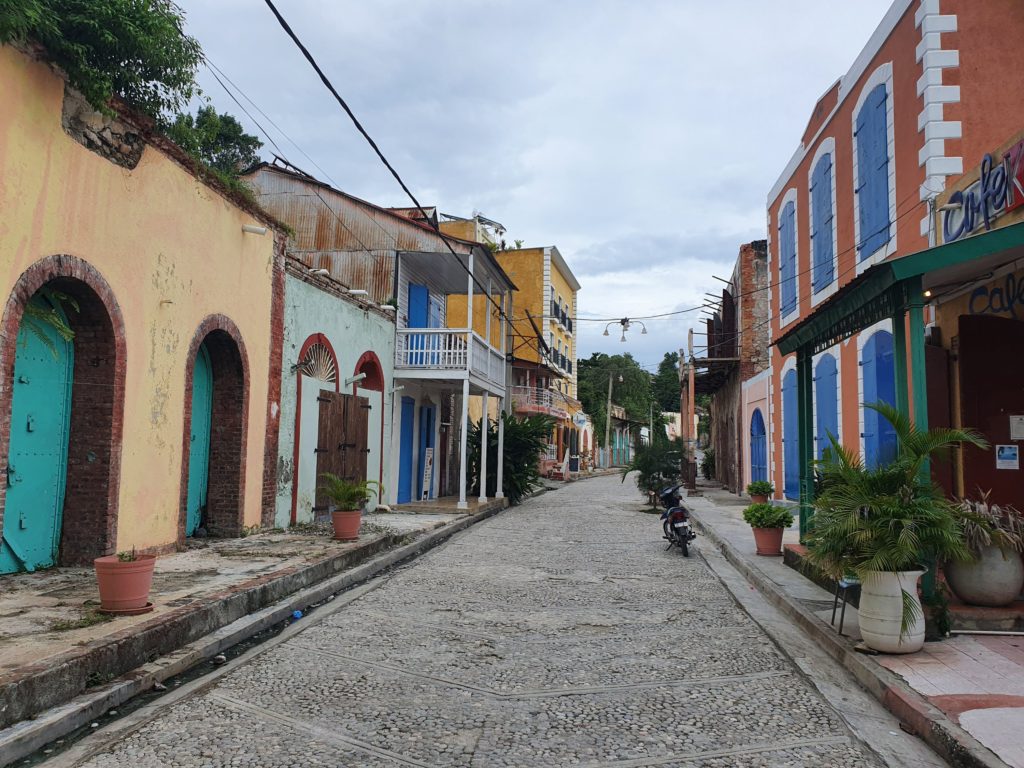
And that’s the way it happened. We visited the Hotel Florita, the beach promenade and had a look at the beautiful architecture of the city. I found Jacmel quite cool. Compared to Port-au-Prince, it is a peaceful, laid-back village by the sea, which looks pretty and has a relaxed vibe.
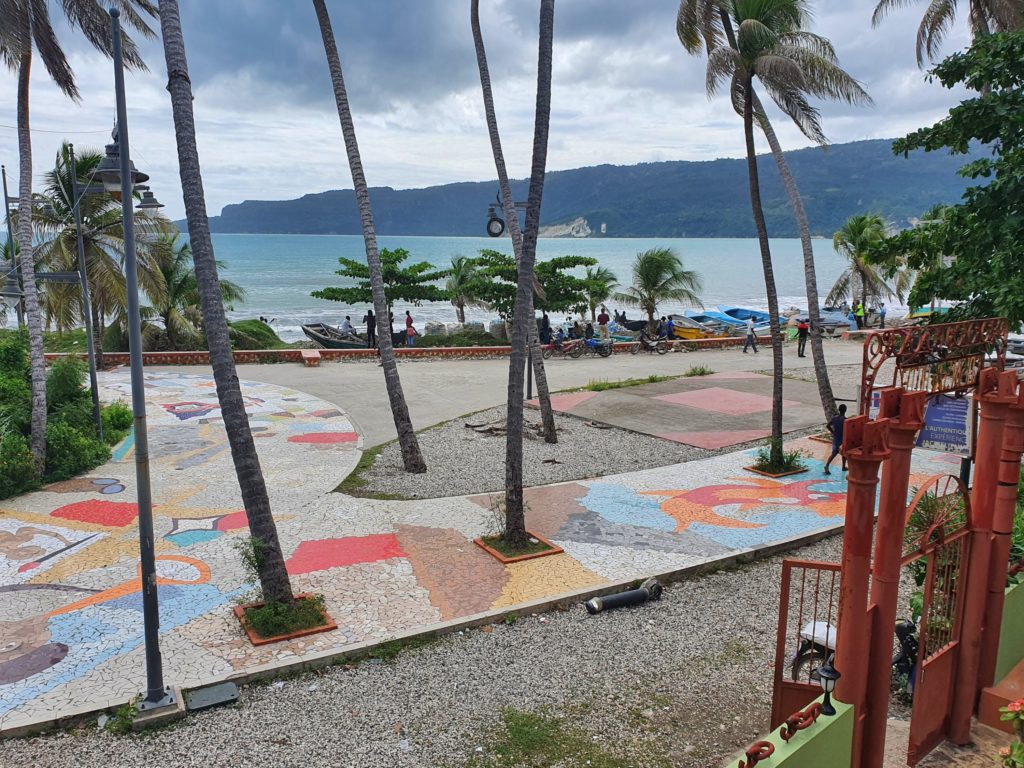
We visited another hotel where I used my last gourdes to invite my guide and the “second guide” for a coffee or a beer. The second guide still seemed disappointed in the end that I did not pay him. If my guide had been a man of honor, he would have given the guy some of his salary. After all, he took over his job for a few hours…
We went back to the car and the driver was of course nowhere. We found him a few minutes later, as he was busy buying some shoes on the side of the road. I was ready for the return trip, but the driver said that he wanted to go somewhere to eat. It’s not like the guy just had two hours to eat or do whatever he wanted. He had to wait until we came back to do so.
It ain’t over until the fat lady sings
We ate fried chicken in a restaurant nearby and I gave my last money, about 4 dollars, which was apparently enough to pay the food for my guide, the second guide, the driver and me. Then we headed back towards Port-au-Prince.
We drove only about ten minutes when my guide turned around. “My brother-in-law asks if you can help him out with the gas.” At that moment, I wasn’t quite sure whether this question was going to amuse me or drive me crazy. “In your tour offer you wrote that the gas is included,” I told my guide. The guide told the driver, which obviously caused some displeasure.
Shortly afterwards the driver went somewhere to change money so he could fill up the tank. It seemed that the mood was even worse now than before. “My brother-in-law says he’s not happy with his salary.” – “Excuse me?” I replied. I felt $220 for two days was an extremely fair salary in a country like Haiti. Especially since the owner of my hotel told me that some of her employees earn $100 per MONTH.
“The exchange rate between the gourde and the dollar has not been good since COVID-19. My brother-in-law has just realized that he only gets half of what he actually expected.” – “Well, we agreed on a price and I’m not the one who sets the exchange rates,” was my answer. I couldn’t believe what I just heard.
“Yeah, it’s just that he wants me to let you know that he is unhappy.” After this sentence I was about to explode. This ungrateful guy allowed himself a nice lunch at my expense the day before, then he asks if I can pay the gas and last but not least he wants more money despite being a quite unreliable and unfriendly fellow since I met him. The driver’s shamelessness seemed to have no limits.
I raised my voice when I answered my guide: “Listen to me, my friend. Do you think this is good for your business?” – “What do you mean?” my guide replied. “Do you think that this kind of conversation will help your business? Or don’t you think it might hurt your business?” – “Oh, no-no, don’t get me wrong. We’re not upset or anything. We just wanted to mention it.”
I was stunned. It had never happened before that a guide or his driver wanted to renegotiate the price. Scenes that you might experience on a cab ride in Cairo now became reality on a two-day tour in Haiti.
The return trip was unbearable under these circumstances. For the next thirty minutes I heard how me and the money were the subject of their conversation. The Creole language uses many French words and so I could hear how my last “mille” gourde was spent on the “café”.
It made me quite uncomfortable and I was asking myself how this day would end. I could really imagine that they ask me to leave the car and leave me stranded in the middle of nowhere because I didn’t want to pay more. Another possibility that came to my mind was that they would drive back to their slum in Port-au-Prince, chase me out of the car and tell me to find my way to the hotel by myself. It wasn’t even my guide I did not trust, but his brother-in-law. The problem was, however, that the driver seemed to be the boss of the two and my guide did was this guy was telling him.
We had already been driving for almost two hours and it was now 17.00. That we would be back in Port-au-Prince at 16.00 was once again a pretty bad estimate of my guide. We were in Carrefour now, a suburb of Port-au-Prince. From here it would take about another hour. But I did the calculation without the traffic. At some point we were standing still and in ten minutes we covered a maximum of 100 meters.
“How long do you think it will take us to get to Port-au-Prince? About four to five hours?” I asked jokingly. “Yes, about four hours.” I thought I had just heard wrong. But my guide was serious. Admittedly, I was used to situations like that from my travels through West Africa. I was not even angry and surrendered to my fate. Let it be four more hours in the car. Without water and without something to eat.
“That’s why we said we should leave at 5am,” my guide reproachfully instructed me, as if it was my fault. “You two idiots arrived an hour late, your car broke down on the way, the driver had enough time to eat while we were away, but he had to do so just when we finished the tour in Jacmel. Why do you hold me responsible for this? Your fucking incompetence has put us in this situation!!”
I did not say it, I just thought it. I replied that I was ready at 6.30 am, as we had agreed. Also, I added that I could not know that bad traffic means a delay of four hours. I thought maybe we would lose one hour if we cannot avoid the rush hour. “Don’t you think you could pay us more now? Now that you see how much time we’re losing,” asked my guide again. I didn’t have the nerve for argument anymore and just didn’t answer.
Sometimes it’s good to assume the worst case scenario. Because my joy was all the greater when, after about an hour and a half, we were back on the road at normal speed. I just wanted to go back to the hotel. Unfortunately, my anticipation came too soon. About fifteen minutes went by when the car turned off somewhere into a dark side street and stopped in front of a house. What will happen now, I thought. My guide and is brother-in-law opened the door and got out.
“This is where my brother lives. We promised him we’d come by for a beer.” That was about the last thing I needed right now. “Listen, I’d really like to go to my hotel now,” I said. It was already dark and I just wanted to say goodbye to these guys as soon as possible. My guide raised his eyes. “No, we’ll have a beer now. It won’t take long.”
And so I sat in the brother’s yard for another three-quarters of an hour. The whole family was drinking beer and chatting while I sat next to them, not understanding a word and just hoping that this nightmare would end soon. Almost begging, I asked my guide after this three-quarters of an hour if we could finally leave now, which he fortunately agreed to. One hour later I was back in my hotel after a 7 hour drive from Jacmel. A route that usually takes 2.5 hours…
What went wrong?
The next day, my guide texted me and asked if my return to the Dominican Republic was fine. I came straight to the point and told him that I could only give him a well-intentioned advice: he should never ever use his brother-in-law as a driver again. I added that I had never experienced such behavior before and that this shady guy would destroy his business in the long run.
My guide apologized afterwards and said that his brother-in-law had never behaved like this before. He also promised not to work with him in the future. Do I think he will really stick to it? I doubt it.
In hindsight, it was without a doubt the worst experience I ever had with a guide. I could have easily turned a blind eye to all the small issues, e.g. the delays, his poor organizational skills and the lack of knowledge about his country. The constant discussions about money, however, were just outrageous.
For me the question arises why many like-minded travelers were satisfied with this guy. Without knowing the exact answer, I can only guess that the driver was another person back then. In my opinion, my guide is not a bad guy, but he simply didn’t have the guts to tell his brother-in-law to shut up. However, since he is responsible for his company, he shouldn’t be surprised if this falls back on him in the end.
Especially in a country like Haiti, where the crime rate is high and kidnappings are a sad reality, you have to be able to trust your guide 100%. My trust was quickly gone and in the end even turned into distrust. Although I was more or less relaxed during the conversations about the money, I can imagine that a guide behaving like this can be a tremendous stress test for some other travelers.
Funnily enough, two weeks after the trip, I visited the Facebook page of my guide. He even uploaded a photo of us and writes that we had a blast in Jacmel, which is just hilarious. I also checked out the reviews on his site. Apart from the many Haitians, who rate his company with five stars, I also noticed a few unhappy customers. One American traveler even accuses the guide of stealing 500 dollars from him and leaving him stranded in Jacmel.
Of course, you have to treat such accusations with caution, but it would not really surprise me if they were true.
My thoughts on Haiti as a travel destination
It makes me sad that the story with my guide left the strongest impression on me when I think back to Haiti, because the country actually deserves a better story. And yes, I found downtown Port-au-Prince quite depressing, as the level of destruction and garbage was something I had never seen before. I’ve been to some terribly dirty cities like Lagos or Conakry, but Port-au-Prince plays in another league. Still, I think it’s important to see this city, if only to get an awareness that such places exist.
However, there are also positive things to say about Haiti. Even if many people think of Haiti as poverty and the earthquake, the country is still incredibly beautiful.
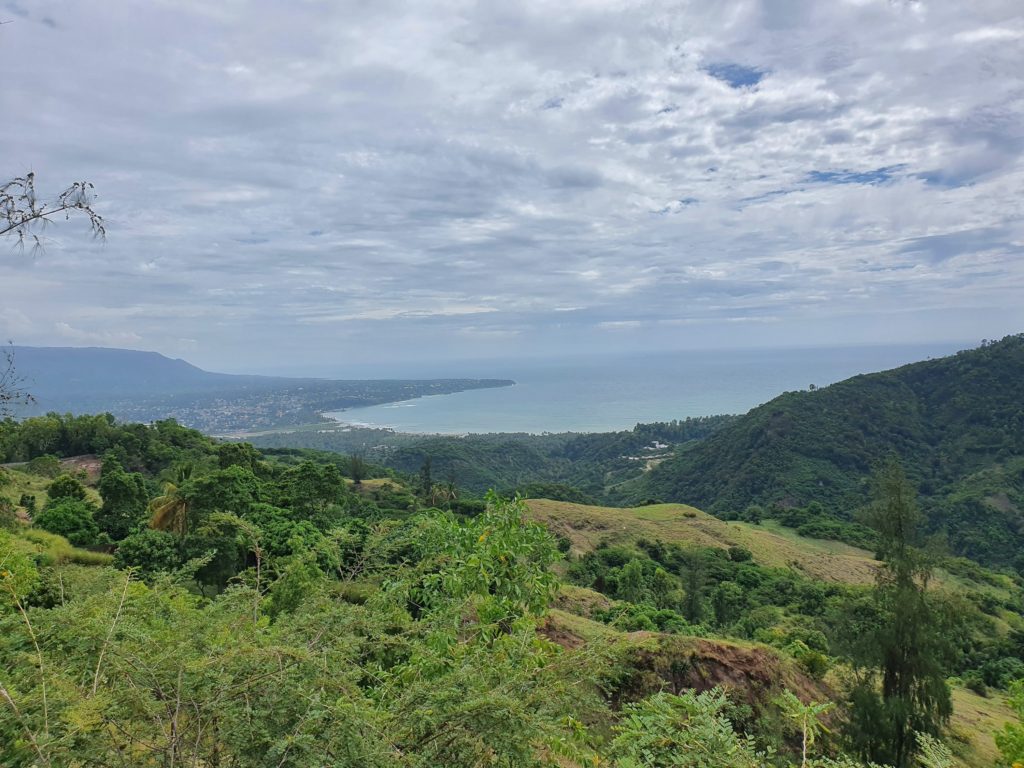
If the land borders between Haiti and the Dominican Republic had been open, I would have visited the north of Haiti instead of Port-au-Prince. You can visit the Citadel La Ferrière and the Sans-Souci Palace there. Both sights look on pictures as if they can compete with any other top tourist attraction in the world.
Furthermore, Haiti has dream beaches, the Haitians even insist that the most beautiful beaches of the Hispaniola Island are in their part. Not far from Port-au-Prince is Wahoo Bay Beach, and not far from Cap-Haïtien in the north is Labadee. Both look stunning and are only two examples of amazing beaches in Haiti.
In conclusion, I would like to say that I wish the Haitians from the bottom of my heart all the best for the future. May the situation one day change for the better. Then the country will also benefit from its huge tourism potential. I am convinced of that.
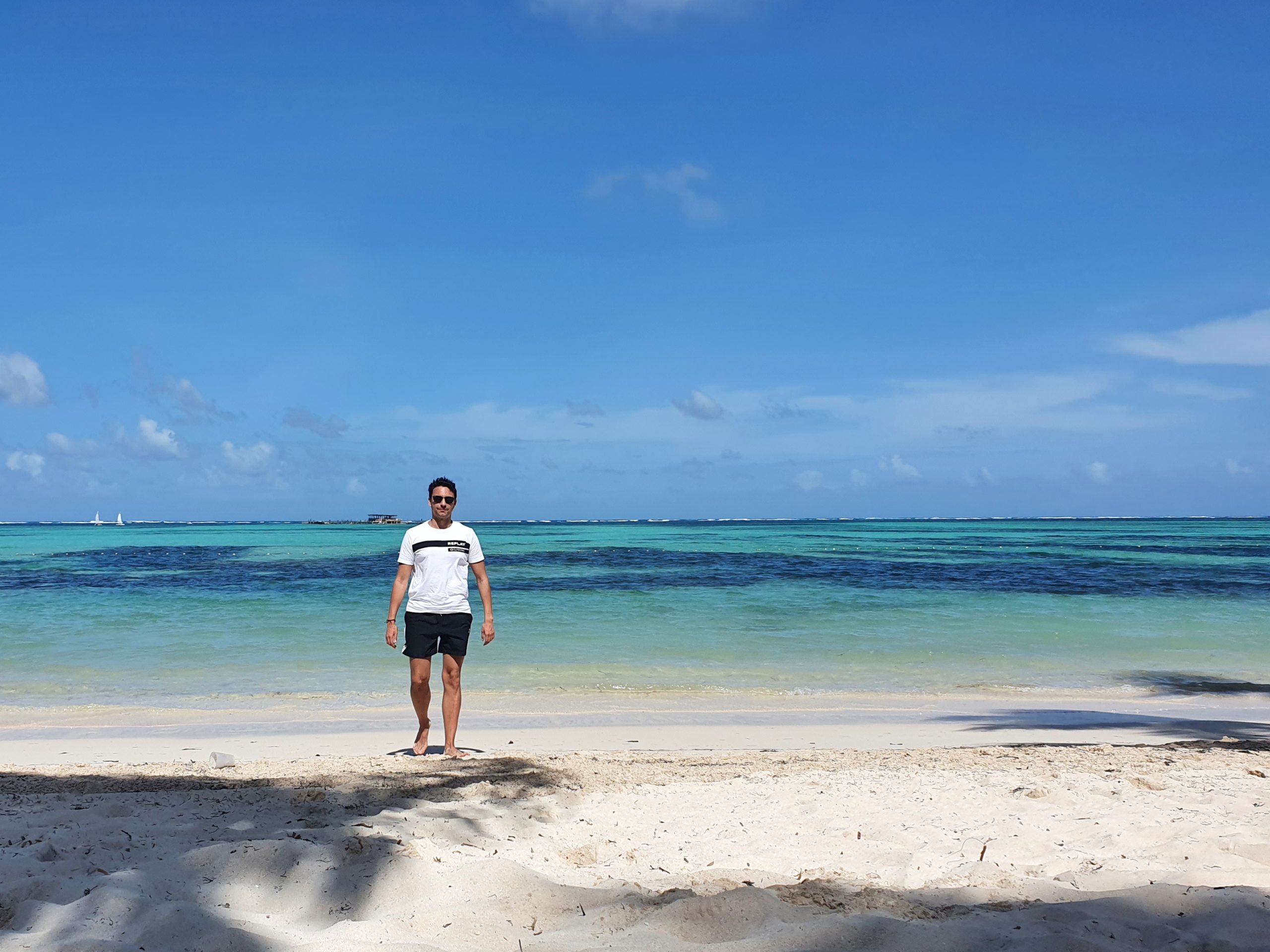
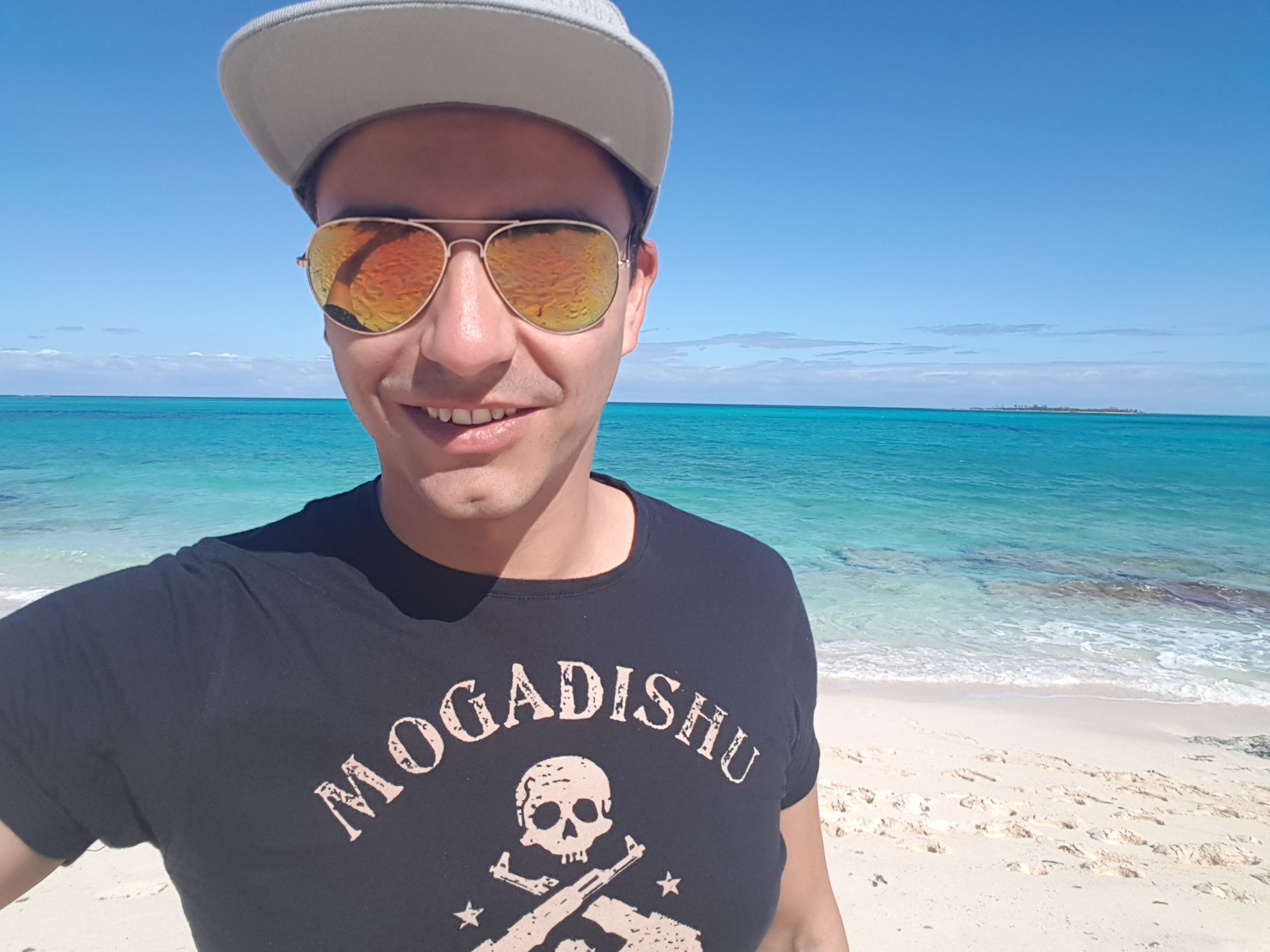
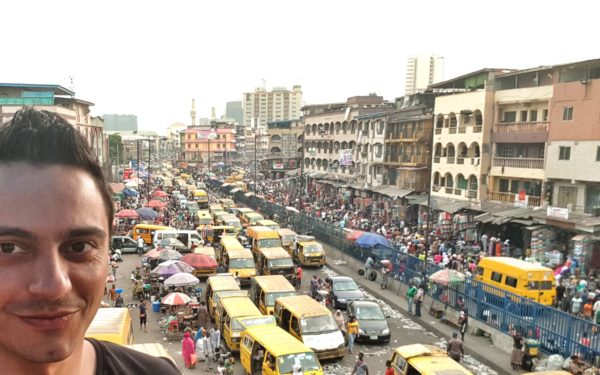
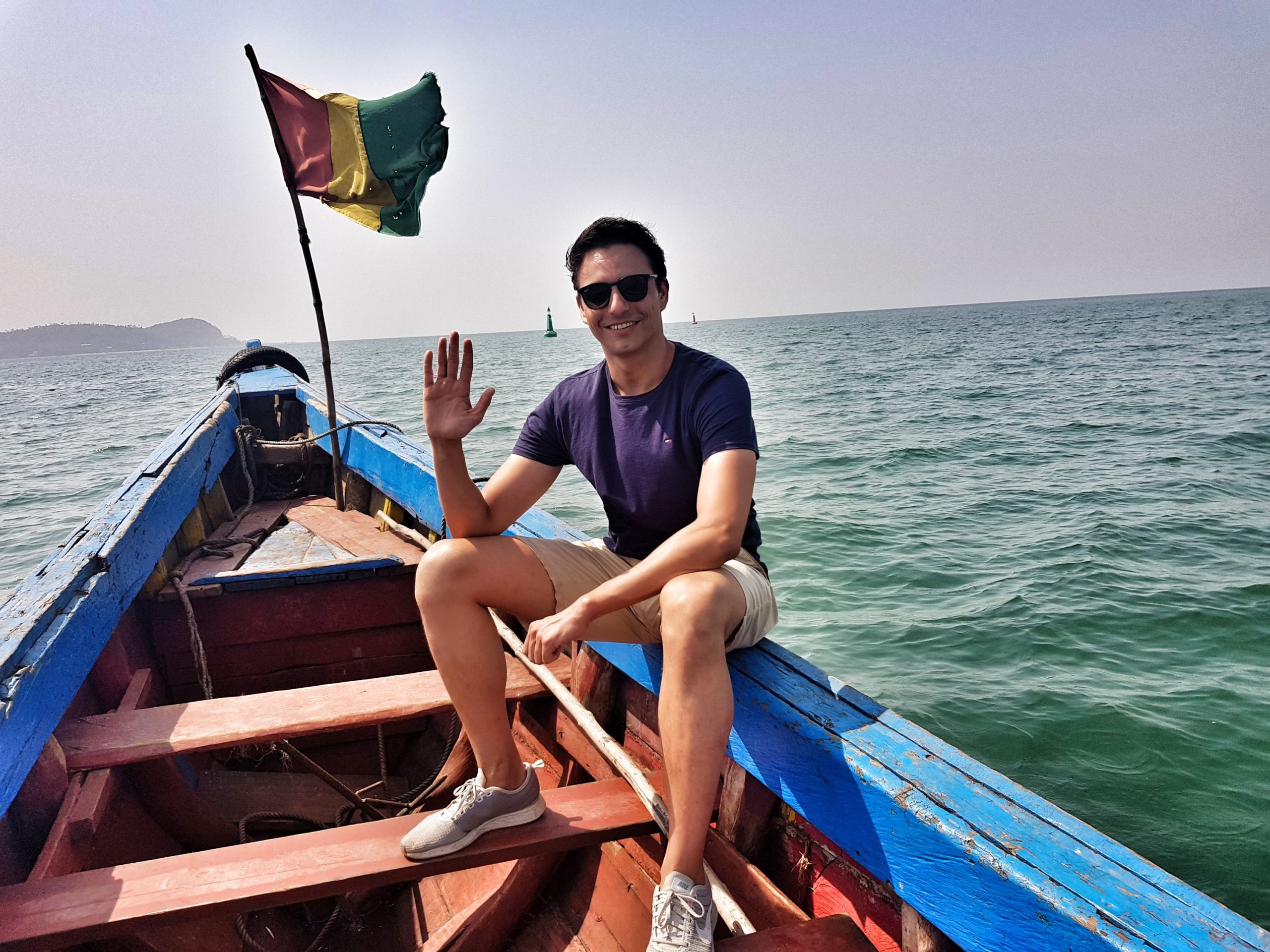
Can you mention here (or email me) what guide you used in Haiti so I accidentally don’t use the same one for my trip in a few weeks, thanks.